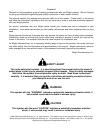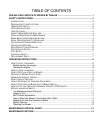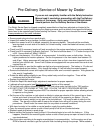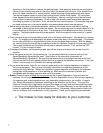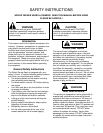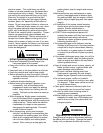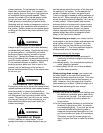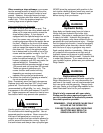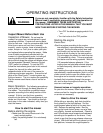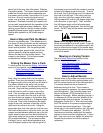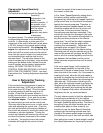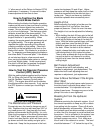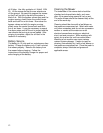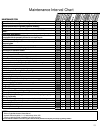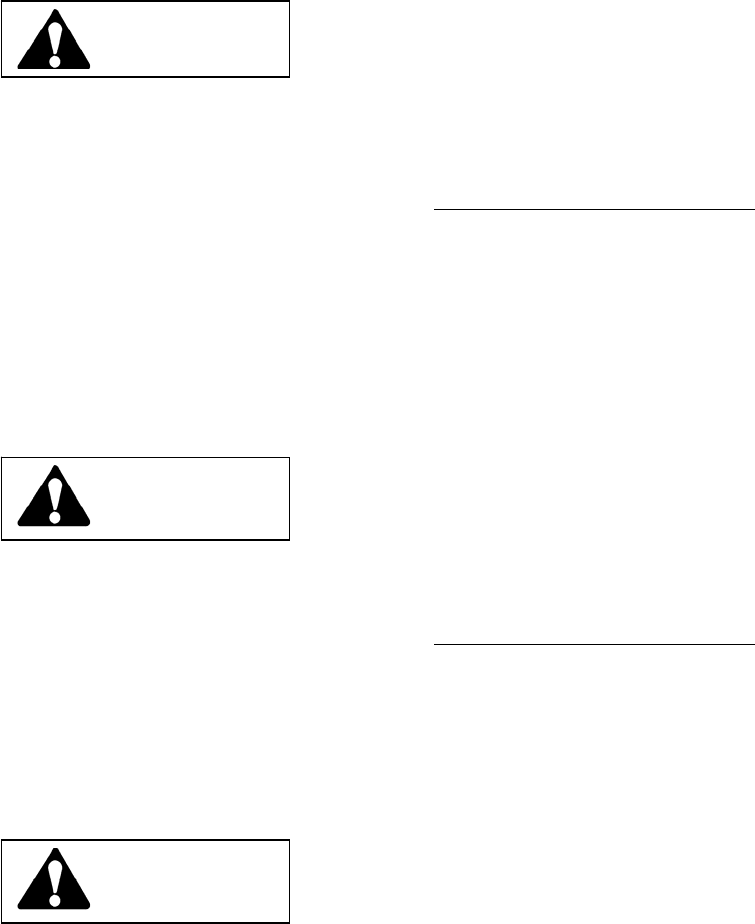
6
mower operates. Do not operate the mower
faster than conditions allow. For example, hills,
wet or bumpy ground, dim light or high grass are
all conditions requiring slower speeds. Never
operate the mower at the highest speed unless
you are on level, wide, open areas of clearly
visible ground or transporting on paved areas.
Speeding with any mower is dangerous, and so is
traveling faster than conditions should permit on
this mower. Sudden stops from excessive speed
or falling off the mower may cause serious injury
or death.
Operation In Reverse
Always keep a firm grip on the mower stationary
handlebar with both hands. Keep both feet firmly
on the foot platform. Look behind you before
backing to prevent injuring yourself or anyone
behind you. Operate the mower very slowly,
inching it backward until you become familiar with
how the mower operates. Always operate slowly
if in an awkward location or position. While
backing up never place your foot or feet on the
ground near the back edge of the mower to
prevent serious personal injury if the mower were
to run over you.
Zero-Radius Turn Operation
During zero-radius turns (when one mower wheel
rotates backwards while the other rotates forward)
drive extra slowly to reduce the possibility of
losing traction, or control, or becoming dizzy. This
will help prevent you from being thrown off the
mower. Be aware that if you do a turn on a slope
you may go through all of the orientations to a
slope mentioned below and must handle the
mower accordingly.
Operation on Slopes
DO NOT operate on steep slopes. Do not
operate the mower on slopes steeper than you
can feel secure about the traction of the tires and
the stability of the mower. Do not operate the
mower on slopes at all when the grass is wet.
There is a danger of suddenly sliding sideways or
down the hill. When operating on a slope, travel
across the grade whenever possible, not in an up
or down pattern. Reduce speed and exercise
extreme caution on slopes and in sharp turns to
prevent tipping or loss of control. Be especially
cautious when changing direction on slopes.
Heavier operators may consider obtaining the
optional weight bar, which is designed to add
weight to the front of the machine.
When pointing up a slope, your mower has the
most weight on the drive wheels and therefore the
most traction at the tires. However, this is the
angle that it has the most tendency to tip back
(“pop a wheelie.”) This is the preferred angle for
mowing small areas of steeper slopes.
WARNING
Recommendations for this angle:
• Lean as far forward as possible and stand if
necessary to add your weight to the front of
the mower.
• Accelerate gently. Do not accelerate quickly to
avoid “popping a wheelie”.
• If backing down the hill, do not stop suddenly
but slow down gradually.
When pointing down a slope, your mower has
the least weight on the rear drive wheels and
therefore the least traction at the tires. This is the
angle that the mower has the most tendency to
slide. However, this is the angle that it has the
least tendency to tip back. Avoid this angle, as it
has the least advantage for your mower.
WARNING
Recommendations for this angle:
• Stretch your arms out straight while holding onto
the stationary handlebar and sit back as far
as you can on the seat. This adds more of
your body weight to the drive wheels for
more traction.
• Do not change speed suddenly to minimize the
tendency of going into a slide. Accelerate
and decelerate gently. If you ever go into an
uncontrolled slide while pointing down a
slope the recommended procedure is to let
go of the handles and jump off if necessary.
Otherwise, control the mower gently and
stay off slopes that tend to make the wheels
slide.
WARNING



